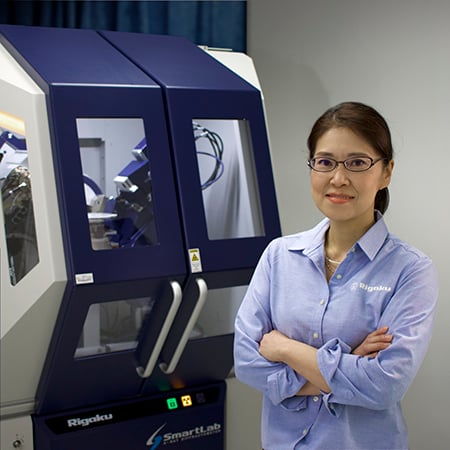Application Note BATT1029
Introduction
Sodium-ion batteries have the advantage of abundant raw materials and low environmental impact, but there are challenges in securing high discharge voltage and capacity. It is known that the higher the crystallinity of α-NaFeO₂, which is expected to be used as a cathode material, the better the charge-discharge characteristics. Crystallinity evaluation by XRD is done by calculating crystallite size from peak widths and is useful for evaluating synthetic samples.
Crystal phase analysis
- Analysis: Sodium cathode material
- Use: Optimizing electrochemical performance
- Analyzed materials: NaFeO₂
 Figure 1: XRD patterns of α-NaFeO₂ synthesized under different conditions. Condition 1: 150°C, 48 hours; Condition 2: 220°C, 20 hours. Vertical axis is offset notation.
Figure 1: XRD patterns of α-NaFeO₂ synthesized under different conditions. Condition 1: 150°C, 48 hours; Condition 2: 220°C, 20 hours. Vertical axis is offset notation.
 Figure 2: Crystallite size distribution analysis (left) and SEM images (right) of α-NaFeO₂ synthesized under different conditions.
Figure 2: Crystallite size distribution analysis (left) and SEM images (right) of α-NaFeO₂ synthesized under different conditions.
Conclusion
Samples were prepared by hydrothermal synthesis. XRD patterns of two samples obtained under different conditions were compared. It was found that the peak width of the sample under Condition 2 was smaller and the crystallite size was larger. In addition, the SEM images also showed that the grain size of the sample under Condition 2 was larger, which was consistent with the results of the crystallite size analysis by XRD.

